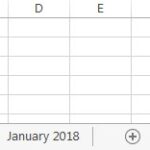Understanding the forces that drive international trade is crucial for policymakers and businesses alike. While absolute advantage might seem like the key to success, it’s actually comparative advantage that fuels global trade and leads to greater prosperity for all involved. This article delves into the differences between these two concepts and explores why comparative advantage is the more significant factor in shaping trade patterns.
Absolute vs. Comparative Advantage: Defining the Terms
Absolute advantage refers to a country’s ability to produce a good or service using fewer resources (such as labor, capital, or land) than another country. In essence, it signifies greater efficiency in production.
Comparative advantage, on the other hand, focuses on the opportunity cost of producing a good. A country has a comparative advantage in producing a good if it can do so at a lower opportunity cost than another country. Opportunity cost represents the potential benefits an individual, investor, or business misses out on when choosing one alternative over another.
Why Comparative Advantage Matters More
Even if a country possesses absolute advantage in producing all goods, it can still benefit from specializing in and exporting the goods in which it has the greatest comparative advantage. This seemingly counterintuitive concept was first introduced by economist David Ricardo in the 19th century.
Let’s illustrate with an example:
Imagine two countries, Country A and Country B, producing both steel and shirts.
| Country | Steel (kg/hour of labor) | Shirts (units/hour of labor) |
|---|---|---|
| Country A | 3 | 2 |
| Country B | 1 | 1 |
Country A has an absolute advantage in producing both steel and shirts, meaning it can produce more of each good with the same amount of labor. However, Country A’s opportunity cost of producing one shirt is 1.5 kg of steel (3 kg steel / 2 shirts). Country B’s opportunity cost of producing one shirt is 1 kg of steel (1 kg steel / 1 shirt). Therefore, Country B has a comparative advantage in producing shirts.
If Country B offers to trade two shirts for 2.5 kg of steel with Country A, both countries benefit. Country B gains 0.5 kg of steel compared to producing it domestically, and Country A gains one shirt compared to the opportunity cost of producing it domestically (1.5kg steel). This trade allows both countries to consume beyond their individual production possibility frontiers.
The Real-World Impact of Comparative Advantage
Comparative advantage explains why countries specialize in producing certain goods and services. It drives international trade and leads to greater efficiency and overall economic growth. Factors contributing to comparative advantage include:
- Factor Endowments: Differences in the availability of resources like labor, capital, and natural resources influence a country’s comparative advantage. Countries with abundant labor tend to specialize in labor-intensive industries.
- Technology: Technological advancements can create new comparative advantages or shift existing ones.
- Increasing Returns to Scale: Industries with increasing returns to scale (where production costs decrease as output increases) can lead to comparative advantage.
Beyond Basic Models: Expanding the Scope
While traditional models of comparative advantage focus on factor endowments, modern trade theory recognizes the role of factors like technology, product differentiation, and increasing returns to scale. The benefits of trade extend beyond simply producing more; they encompass greater product variety, improved quality, and increased innovation. For example, increased competition from trade forces domestic firms to become more efficient and adopt new technologies.
Conclusion: Comparative Advantage as the Engine of Trade
While absolute advantage provides a basic understanding of production efficiency, comparative advantage is the more crucial concept for understanding international trade patterns. By specializing in producing goods and services where they have a comparative advantage, countries can maximize their output, increase consumption possibilities, and achieve higher levels of economic well-being. Trade based on comparative advantage benefits all participating countries, leading to a more prosperous global economy.

